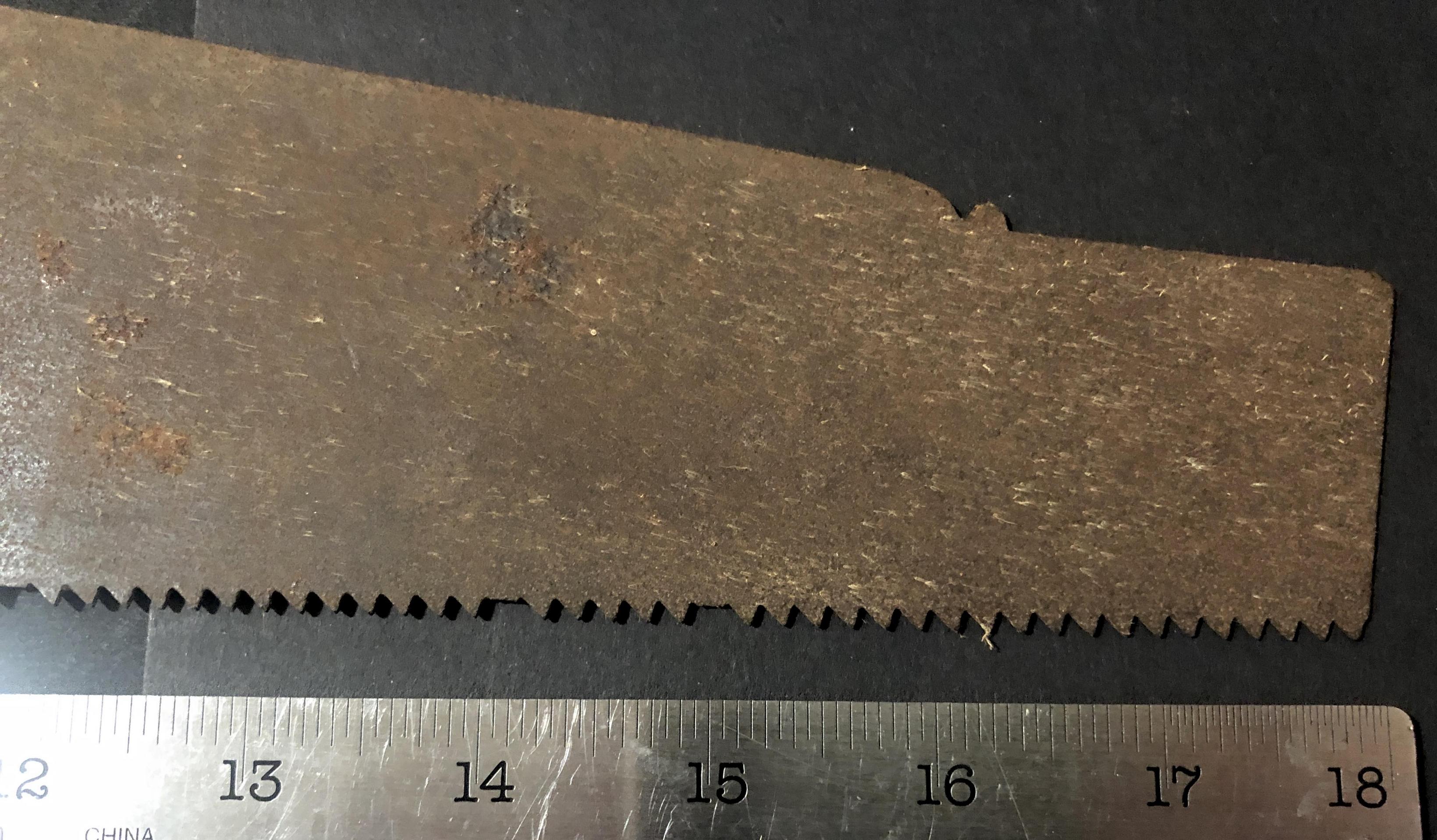I recently acquired 2 homemade saws, likely early 20th century, with features I can't quite place for function or aesthetic. Any ideas?
-
1Couldn't figure out a way to shoehorn this into the Answer so I'll add it here, particularly the first but also the second handle could easily be factory items. The first is shaped very like a lot of earlier backed and smaller unbacked saws from the 19th century up to the early part of the 20th. The basic turned handle on the second is a commonplace generic form but if the saw blade fits a slot in the ferrule quite neatly I'd say there's an extremely good chance this is commercial tool also since similar brass ferrules (with a domed top) were seen on large turnscrews and cabinet screwdrivers.– GraphusCommented Dec 13, 2020 at 12:43
1 Answer
I don't know about the second one but the first is very likely a commercial saw, or at least the blade is from one. The feature you're asking about is the 'saw nib'.
For such an innocent looking feature the nib is actually quite the controversy in woodworking circles. People will argue long and hard about what it was for — yes, people will argue about anything it seems! — however the weight of evidence strongly supports that it is merely decorative, the last remaining purely decorative feature on the blades of saws at the end of a long tradition of decorative (even fanciful) shapes added here and there on saw blades, as well as handles.
The enigmatic nib on Wood Magazine.
Since it didn't have a practical use as far as we know, people delight in coming up with their own ^_^
2 Great Uses for a Saw’s ‘Nib’ on Popular Woodworking.
Questions Answered – Why Nibs on Old Handsaws from Paul Sellers.
The second saw, I've never seen anything like this in a carpentry/woodworking saw. Saws were a part of other trades — including surgery, horticultural work and butchery — and the style and features of saws not intended for wood are often strange looking to the eyes of a woodworker (just as non-kitchen knives can look odd to a cook or chef). That wavy top edge may at one point have been well known within its particular niche but now just a historical footnote.
As I look at the tool again I'm actual thinking, if it's not purely decorative, this may in fact be the primary edge of the tool. And just in general terms the saw edge does appear to be on the back of the blade.
-
Decorative...yeah that nib really does add elegance to the blade! :P– Ashlar ♦Commented Dec 14, 2020 at 0:32
-
1
-
A truly important record of woodworking decorative arts! ... and a testimonial to having too much spare time.– Ashlar ♦Commented Dec 14, 2020 at 17:02
-
1While odd, I do agree that the 2nd blade has the wavy edge as the "primary" edge. Look at the handle offsets from the 2 edges - when using the wavy edge, there's knuckle room if your hand goes over whatever you're cutting into, with the saw-tooth edge, there isn't. Especially true if this is some sort of kitchen/butcher tool - compare it to a kitchen knife layout...– FreeManCommented Dec 14, 2020 at 17:57
-
1A search for "wavy edge saw blade" turns up many tools available today that are designed for cutting soft materials such as cardboard, carpet, leather, etc.– Dave DCommented Dec 14, 2020 at 18:12



